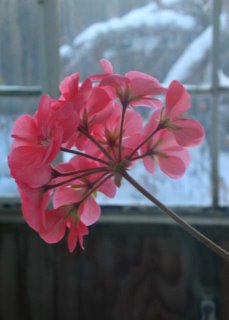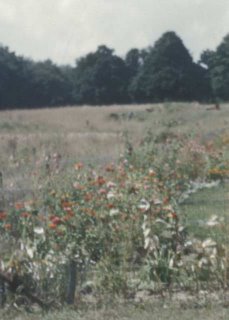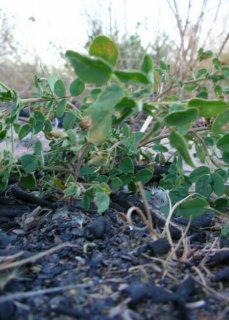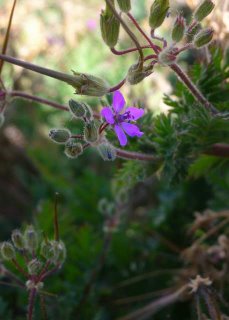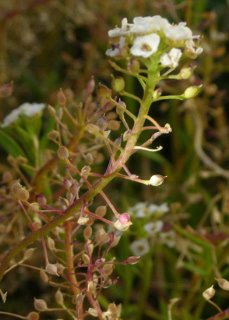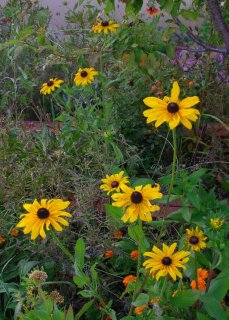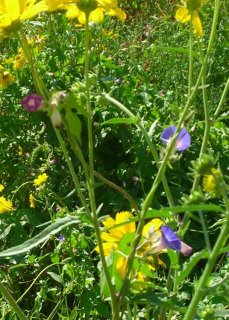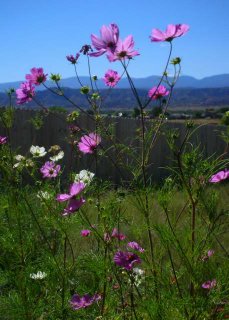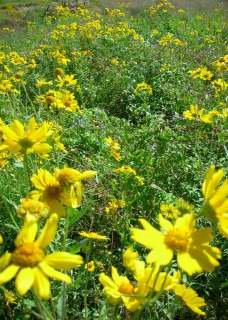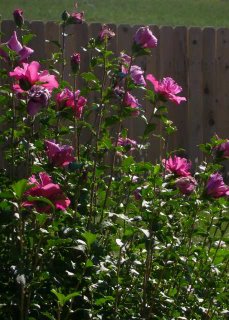 What’s blooming outside: Nothing.
What’s blooming outside: Nothing.What’s blooming inside: Aptenia, zonal geranium.
What’s green and visible in the area: Snow blankets everything.
Animal sightings: Before the snow, birds alternated between the sunflowers and fruit trees; crows were more visible down the road. A rabbit has left tracks in the snow.
Weather: Balmy weather last weekend melted most of the snow. Tuesday, there was about a quarter inch of snow at dawn; snow started falling at sundown, and continued until late Wednesday, leaving about 6" on the ground. Cold afternoons since have allowed the roads to dry, but little has melted. Small puffs still weigh on branches of evergreens and shrubs.
Weekly update: Christmas trees get scarcer every year. Or rather, fewer trees are placed in windows in the fronts of houses where they are visible from the road.
I’ve asked, and people tell me they have the trees in the room where children spend their time, especially on Christmas morning. If it’s in front, the curtains are closed; more likely the tree is in a corner or back room.
Even my mother, who insisted on driving around town in Michigan to look at the trees at least once every season, did not set a large pine or fir in the front window. She had cabinets built under that window, and so the tree was placed by the side window. When I was older, she put smaller trees on the cabinet top, and later, after I left home, she bought an artificial tree.
Here, if people want to decorate for strangers, they put lights outside. This would have appalled my depression father who always translated large light displays into utility bills.
When I first moved here, people ran single strings of outdoor sized lights along the eaves. Only with the introduction of icicle lights sometime after 1996, and, more importantly, the opening of large retailers with their sales in 2001, did people become more creative. Substituting irregular grids of lights for single strings produced new forms that stimulated new ideas for light placement that resulted in more ethereal shapes.
As the price of lights came down, if not utility bills, people strung colored lights on outdoor evergreens, then on any woody shrub, then on walls to create more substance from air. This year, some one has even draped lights over some tomato cages. Others are beginning to buy the lit forms that substitute realism for those uncomfortable with geometric abstraction.
The brighter lights make inside trees more difficult to see from an automobile. I’ve only noticed six this year on the main road, and only two of those have been visible every night.
Decorated trees aren’t really a New Mexico tradition. It was German immigrants who introduced them into this country in the middle nineteenth century, about the time the United States was wresting this area away from México.
Bright light is a far older tradition, usually in the form of bonfires. They dwindled into the small pyres called luminarias that were replaced by safer candles in paper bags. The electrified plastic boxes are no where near as popular or as bright as the tiny, white bulbs, and a lot more difficult to set up and dismantle.
Folklorists suggest Celts in temperate climates used fire to appease the gods of winter, to hope for a mild winter. When I was a child in Michigan, December 21 passed as the beginning of the cold and snow that hid food and killed the weak. Real winter came with January thaws and February storms. Midwinter’s eve was simply one more event between Thanksgiving and New Years.
In New Mexico, the solstice is winter. I’m much more aware of the shortest day here than I ever was in the north. In most years, this is as cold as it gets. There usually is snow again, and the dry winds of February kill, but the days are warmer. This year, we had our second heavy snow fall the day before.
One needn’t know the Celts spread to Spain long before the Romans conquered the Iberian peninsula. The dark, the cold recreate the impetus behind ancient rituals. Bright light is a natural defense against an indifferent universe. Their glimmer halts my rush into the house, make me take time, even as I shiver, to look across lands sloping towards the river where I rediscover houses I’d forgotten when they were hidden by leaves.
Christmas trees have become too cozy to symbolize man’s defiance of fate. They have evolved into symbols for fate’s nemesis, family and culture, the private traditions that inspire children to hope and ambition. Lights are the reminders of life when darkness obliterates all form.
Photograph: December 23, 2006.


